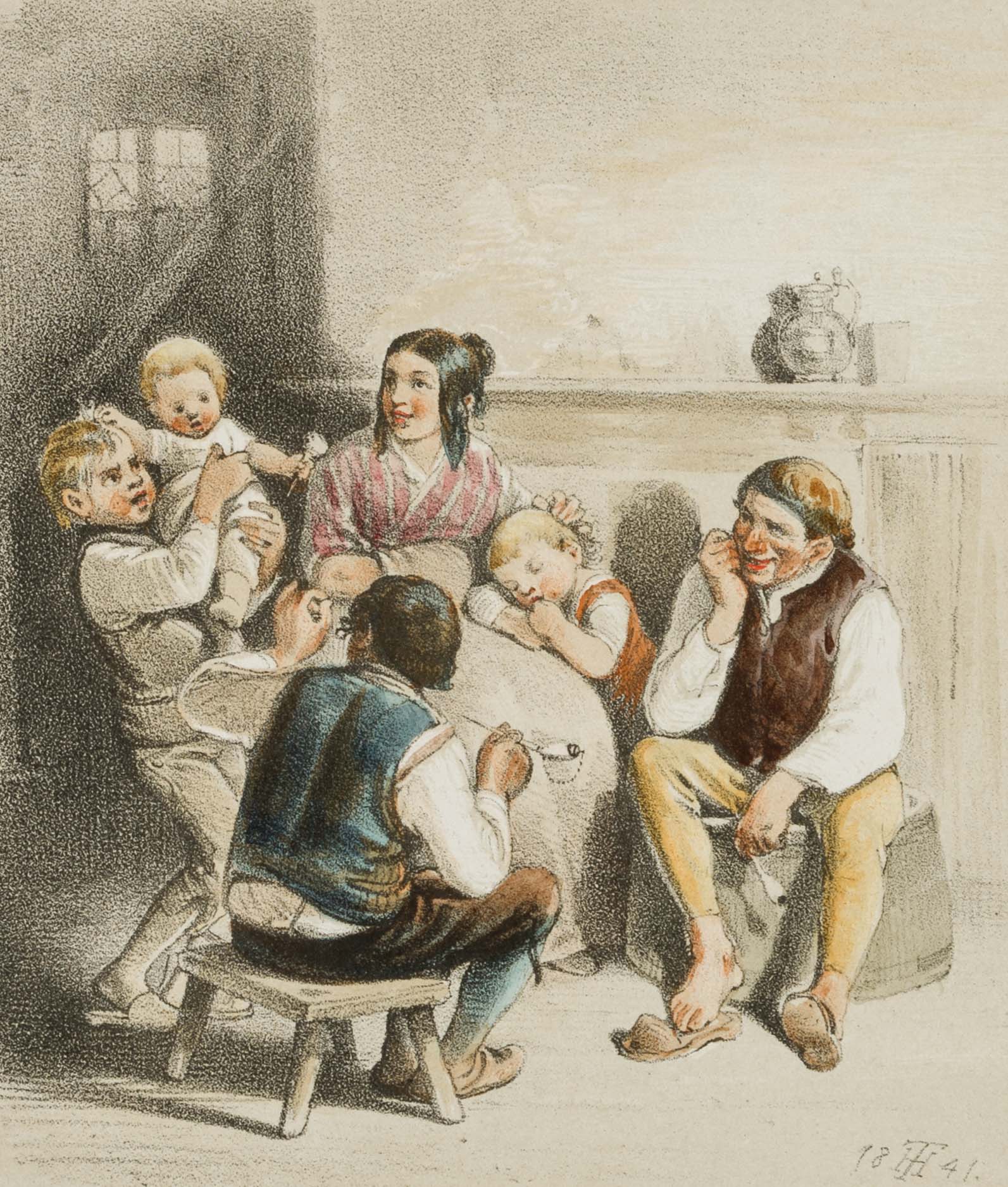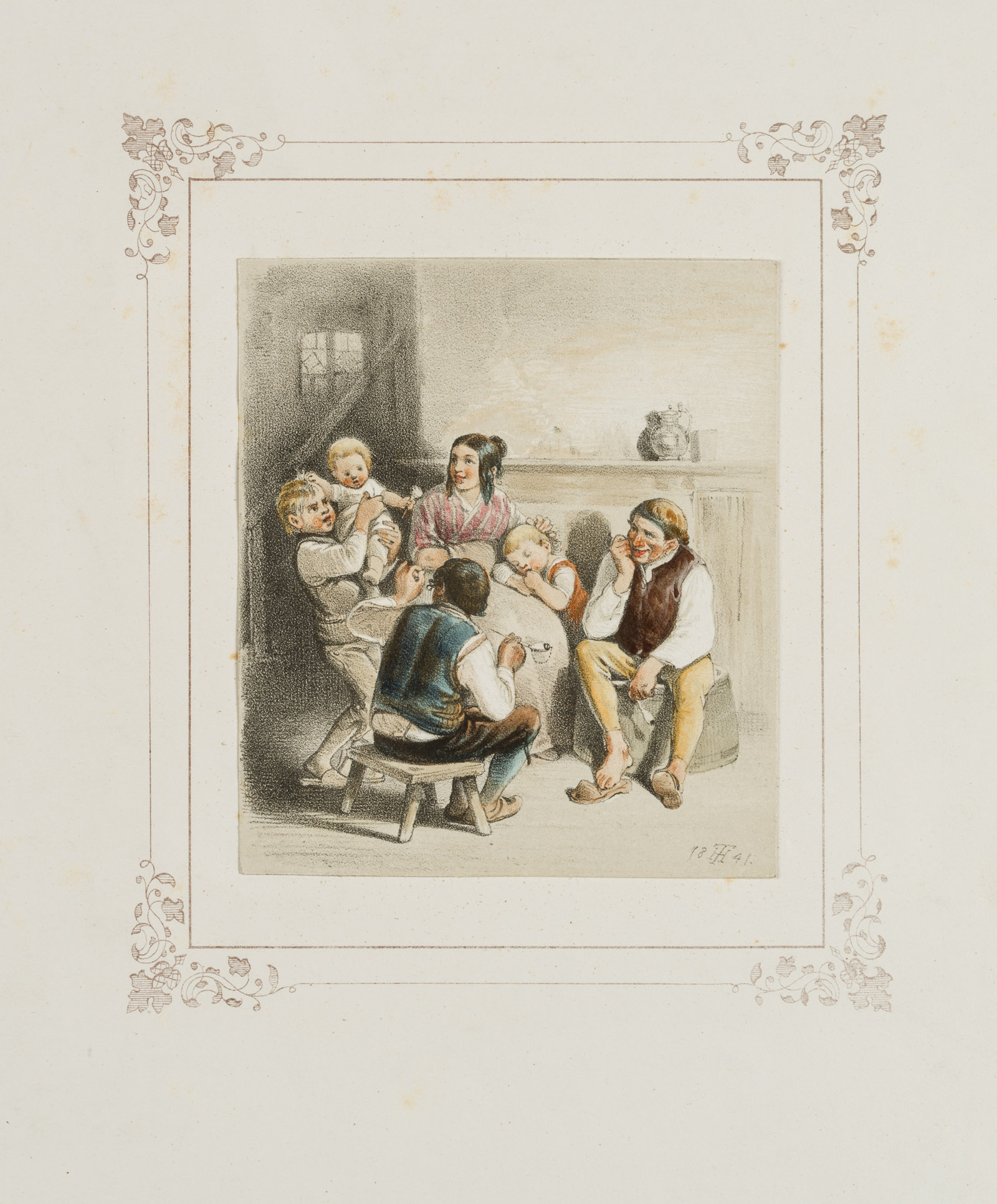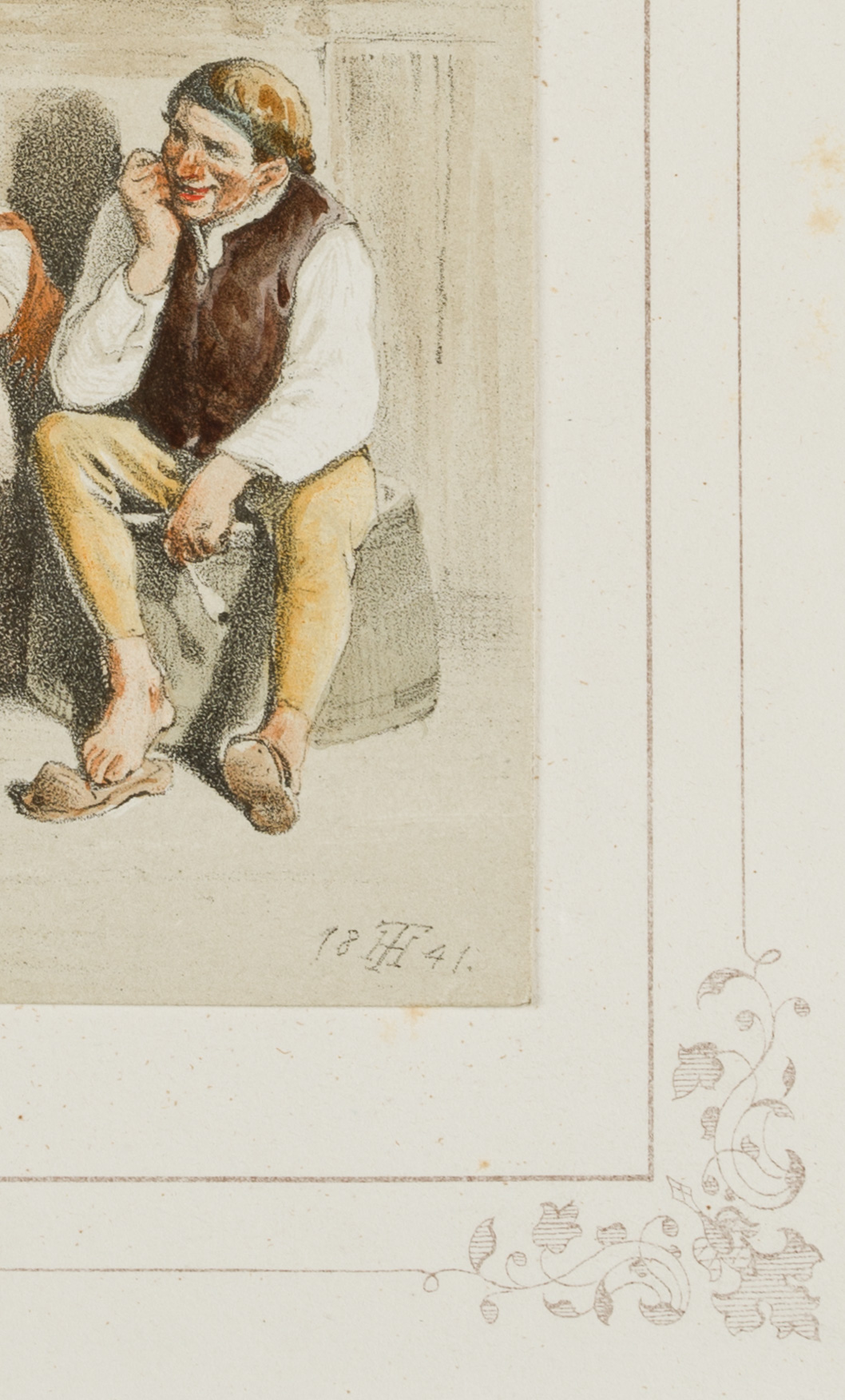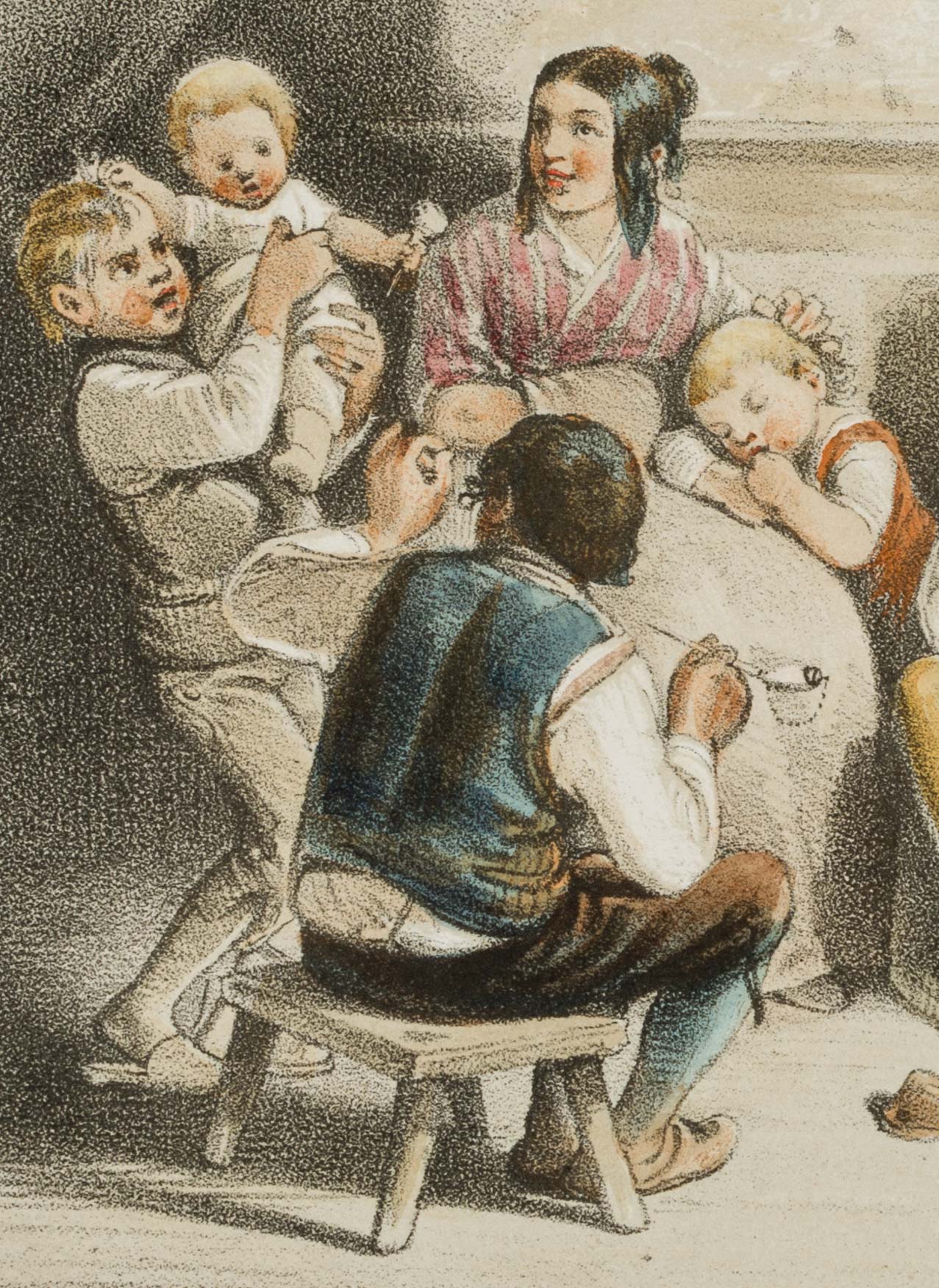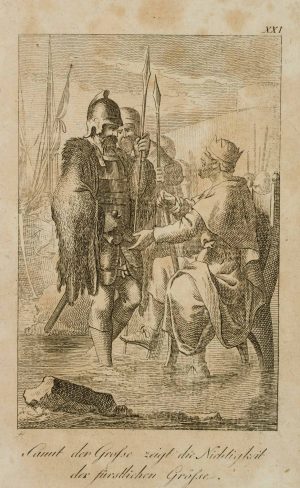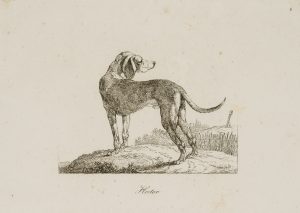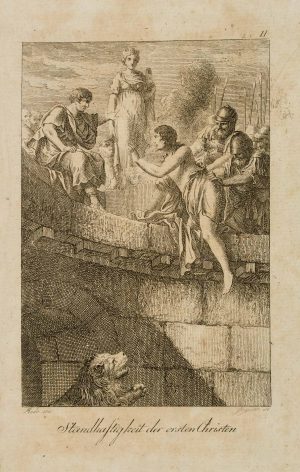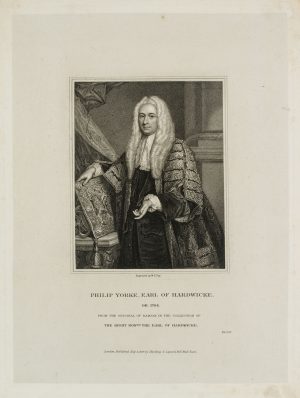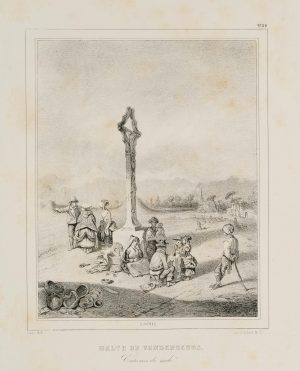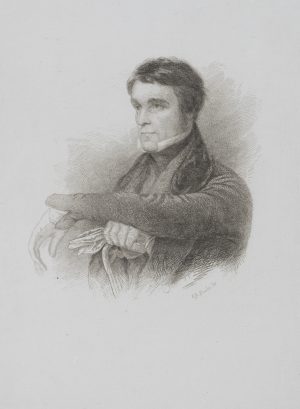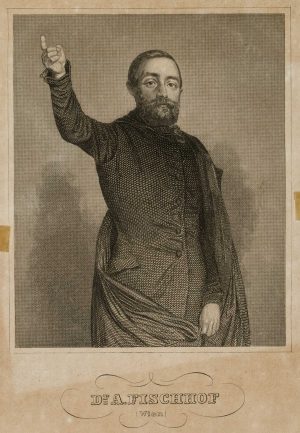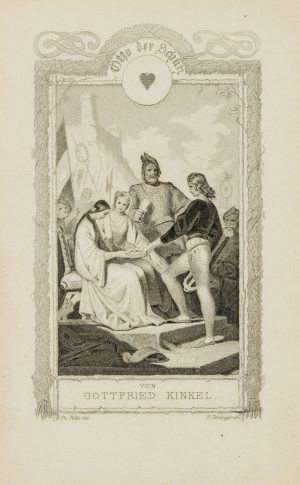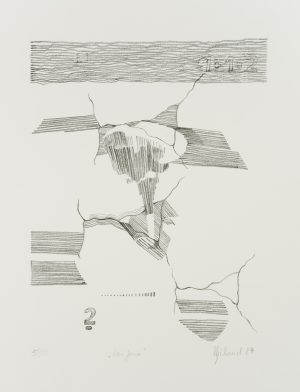Theodor Hosemann (1807 Brandenburg (Havel) – 1875 Berlin), Humoristische Darstellung, Familienfreuden am Abend in der Stube, Deutsche Kunst, Buchillustration, Biedermeier, 1841, Lithographie
- Technik: Handkolorierte Lithographie auf Papier, montiert auf Papier
- Bezeichnung: Unten in der Darstellung monogrammiert und datiert: “TH 1841”; verso mit den Lebensdaten des Künstlers.
Zum Künstler: Hosemann wuchs als Sohn eines preußischen Offiziers an verschiedenen Orten auf, seit 1816 in Düsseldorf. Dort kolorierte er ab 1819 Lithographien in der Lithographischen Anstalt “Arnz und Winckelmann”, absolvierte dort eine Lehre als Zeichner und Lithograph und besuchte zeitgleich den Zeichenunterricht bei Lambert Cornelius an der Elementarschule. 1822 bekam er eine Festanstellung als Zeichner in der Lithographischen Anstalt und studierte gleichzeitig an der Kunstakademie, wo er zu den wenigen gehörte, die Wilhelm Schadow nach seinem Amtsantritt 1826 übernahm. 1828 nahm Winckelmann Hosemann mit nach Berlin; dort erhielt er im neu gegründeten Verlag von Winckelmann eine feste Stelle. Hosemann war von 1842 bis 1855 Mitglied des Berliner Literatenvereins „Tunnel über der Spree“ und trug den Vereinsnamen „Hogarth“. Dem Berliner „Rütli“ stand er in den 1850er Jahren nahe und war von 1857 bis 1860 Mitherausgeber aller vier Jahrgänge des vereinsnahen Jahrbuchs „Argo. Album für Kunst und Dichtung“ (Breslau). In der „Argo“ hat Hosemann mehrere Bilder (Stahlstichtafeln) veröffentlicht. Hosemann illustrierte v.a. Kinder- und Jugendliteratur (u.a. Märchen und Fabeln) und wurde mit diesen so bekannt, dass er bald für verschiedene Verlage tätig wurde und die feste Stelle bei Winckelmann aufgeben konnte. Neben humoristischen Zeichnungen für die von George Gropius verlegten Bunten Hefte arbeitete er mit dem kritischen Publizisten und Schriftsteller Adolf Glaßbrenner zusammen, für dessen in 32 Heften erschienene Reihe “Berlin wie es ist – und trinkt” er die gleichnamigen Illustrationen lieferte. 1857 wurde er zum Professor der Berliner Akademie ernannt, 1860 deren Mitglied und 1866 Lehrer an der an die Akademie angeschlossenen Zeichenschule. Unter seinen Schülern war auch Heinrich Zille. - Datierung: 1841
- Beschreibung: Aus der Hand Theodor Hosemanns, deutscher Maler, Zeichner, Graphiker und Illustrator. Er gilt neben Adolf Menzel als wichtigster Lithograph in der Frühzeit dieser Technik in Berlin. Zur Darstellung: Die auf 1841 datierte Original-Lithographie aus der Zeit des Vormärz zeigt eine vielfigurige Interieur- und Genreszene. Im Zentrum der Darstellung ist die Mutter dargestellt, um die sich – im wahrsten Sinne des Wortes – das Geschehen kreist. Die Augen der Dargestellten sind allerdings auf den kleinsten der Familie gerichtet, der auf dem Arm des ältesten Sohnes die Familie überblickt.
- Schlagworte: Trachten, Genre, Deutschland, Biedermeier, 1800-1849
- Größe: 10,9 cm x 9,5 cm
- Zustand: Sehr guter Zustand. Vereinzelt blasse Stockflecken auf der Unterlage. Die Darstellung macht einen hervorragenden Eindruck.
English Version:
Theodor Hosemann (1807 Brandenburg (Havel) – 1875 Berlin), Humorous depiction, Family pleasures in the evening in the parlour, German Art, Book Illustration, Biedermeier, 1841, Lithography
- Technique: Hand colored Lithography on Paper, mounted on Paper
- Inscription: Monogrammed and dated at the bottom of the image: “TH 1841”; on the verso with the artist’s life data.
About the artist: Hosemann grew up as the son of a Prussian officer in various places, since 1816 in Düsseldorf. There he coloured lithographs in the lithographic institute “Arnz und Winckelmann” from 1819, completed an apprenticeship there as draughtsman and lithographer and at the same time attended drawing lessons with Lambert Cornelius at the primary schools. In 1822 he got a permanent position as a draughtsman at the Lithographische Anstalt and at the same time studied at the Kunstakademie, where he was one of the few who took over from Wilhelm Schadow after he took up his post in 1826. In 1828 Winckelmann took Hosemann with him to Berlin; there he was given a permanent position in Winckelmann’s newly founded publishing house. Hosemann was a member of the Berlin literary association “Tunnel über der Spree” from 1842 to 1855 and bore the association name “Hogarth”. He was close to the Berlin “Rütli” in the 1850s and from 1857 to 1860 was co-editor of all four volumes of the association-related yearbook “Argo. Album für Kunst und Dichtung” (Breslau). In the “Argo” Hosemann published several pictures (steel engraved plates). Hosemann mainly illustrated children’s and youth literature (e.g. fairy tales and fables) and became so famous with them that he soon worked for different publishers and could give up his permanent position at Winckelmann. In addition to humorous drawings for the Bunte Hefte published by George Gropius, he worked with the critical publicist and writer Adolf Glaßbrenner, for whose series “Berlin wie es ist – und trinkt” (Berlin as it is – and drinks), published in 32 issues, he provided the illustrations of the same name. In 1857 he was appointed professor at the Berlin Academy, in 1860 member of the academy and in 1866 teacher at the drawing school attached to the academy. Among his pupils was Heinrich Zille. - Date: 1841
- Description: From the hand of Theodor Hosemann, German painter, draughtsman, graphic artist and illustrator. Along with Adolf Menzel, he is regarded as the most important lithographer in the early days of this technique in Berlin. The original lithograph from the time of the Vormärz, dated 1841, shows a multi-figured interior and genre scene. In the centre of the picture is the mother, around whom – in the truest sense of the word – the action revolves. The eyes of the sitter, however, are directed towards the smallest of the family, who overlooks the family on the arm of the eldest son.
- Keywords: 19th century, Biedermeier, Costumes, Germany,
- Size: 10,9 cm x 9,5 cm (4,3 x 3,7 in)
- Condition: Very good condition. Isolated pale foxing on the backing. The illustration makes an excellent impression.

